| Author | Message | ||
John Rowney Experienced User Username: johnrowney Post Number: 108 Registered: 02-2015 |
When going around reasonable radius corners, my 1938 Wraith, WXA68, has recently given off a petrol smell. When stopped after the smell occurred, I can't find any petrol evidence in the engine bay - perhaps it takes too long to stop and open the bonnet up and any liquid has evaporated. My last passenger complained about this - perhaps I have had this happen for a while but I didn't notice it. Any thoughts re what is occurring and remedy? 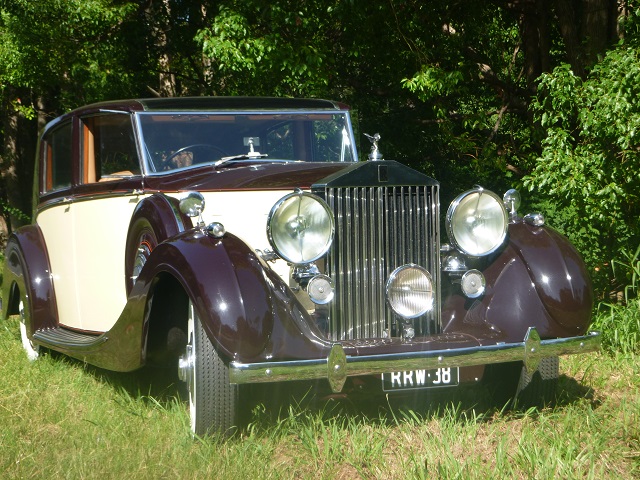 | ||
Martin Webster New User Username: martin_webster Post Number: 36 Registered: 09-2018 |
John, the petrol leak may well be coming from the rear of the car and not the engine bay. It is possible that the rubber hose from the petrol filler to the tank has perished and when you corner, fuel surges across the tank and out of the hose. This happened to me on my HJM Mk VI. The replacement of the hose wasnít entirely straight forward and entailed removing the aluminium cover in the boot interior which allowed access to the filler hose to enable its replacement. | ||
Mark Herbstreit Frequent User Username: mark_herbstreit Post Number: 239 Registered: 05-2005 |
Was the tank full? Could it be leaking around the fuel cap? | ||
John Rowney Experienced User Username: johnrowney Post Number: 111 Registered: 02-2015 |
Thanks Mark and Martin. When my mate noticed the smell we had already done about 200 miles and obviously it was headed towards empty. I have had a look at the boot and I have a similar sort of cover over the petrol filler tube. I will take the cover off this afternoon and see what it looks like. | ||
John Rowney Experienced User Username: johnrowney Post Number: 112 Registered: 02-2015 |
 The cover over WXA68's fuel filler  Fuel filler cover removed 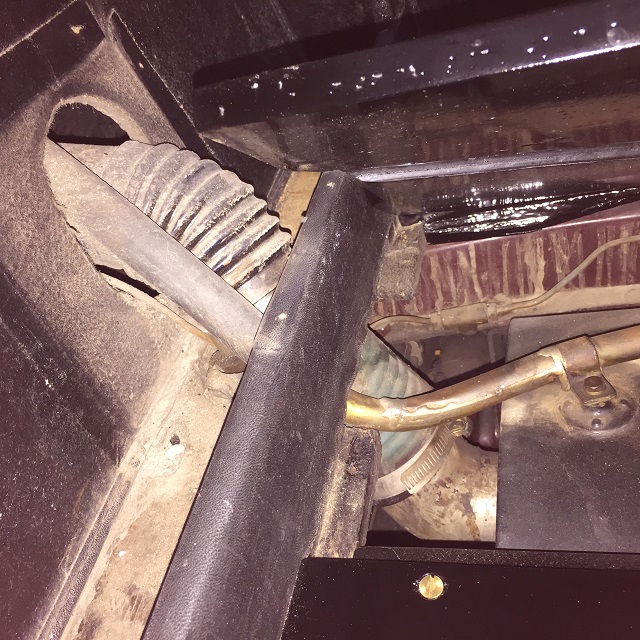 Fuel filler to the tank - floor panel open I took off the fuel filler cover and then opened the floor panel. The photos show that the hose looks like a rather difficult item to get to. I think I would have to remove the timber structure to the right of the hose. My first impressions are that this would be a difficult job, since most of the screws holding the timber pieces are hidden under the black covering material. The hose itself looks about 100-120mm long - it extends from the horizontal timber section to the lower hoseclip. The black accordian type fitting seems to be just a protecting sleeve over the bend in the upper pipe. My thoughts are now to fill the car fully with petrol and lift up the tank cover and see if there is a leak while still at the service station. This should tell me if the hose has any leaks. Mark: I do have a problem with leaks around the fuel cap. I have always had staining around the fuel cap area which on WXA68 is on the near side rear mudguard. I had always attributed it to fumes, but it is most likely due to leakage from a full tank when initially driving the car after a petrol fill. I will have a closer look at this, but suspect that this is a separate problem to the problem when the tank is near empty. Many thanks Mark and Martin- a few more things to resolve and great suggestions. | ||
Martin Webster New User Username: martin_webster Post Number: 37 Registered: 09-2018 |
Good luck John. Even with limited access to the fuel hose it isnít a straight forward job unfortunately but you seem to have greater access on WXA68 than I did on B88HR. | ||
John Rowney Experienced User Username: johnrowney Post Number: 115 Registered: 02-2015 |
I filled the Wraith up fully, and petrol gushed out around the filler hose area. I am planning to put the car on the hoist tomorrow and try and get the pesky hose out, measure it and replace it. I don't think it will be easy. Watch this space! | ||
John Rowney Experienced User Username: johnrowney Post Number: 116 Registered: 02-2015 |
I also looked at the fuel filler cap. The washer is a 3" diameter solid leather washer. Where it seals on a raised section of the piping, it was full of dirt - obviously not a good seal. When I tackle the hose replacement, I will remove the washer and soak it in oil and flip it over. This will hopefully give a better seal. | ||
Martin Webster New User Username: martin_webster Post Number: 39 Registered: 09-2018 |
I would probably use neatsfoot oil to soak the washer and then compress it slightly to get rid of the excess rather than conventional oil as neatsfoot will preserve the washer. | ||
John Rowney Experienced User Username: johnrowney Post Number: 118 Registered: 02-2015 |
I have soaked the washer in ordinary oil (too lazy to chase neatsfoot oil at this stage). We will see if I get any more leakage past the fuel filler cap. I couldn't easily dismantle the timber framework around the fuel filler piping - screws did not want to turn! I then sealed what I thought was the most likely area for leaks with silicone. Today I looked at the fuel filler piping from under the wheel area, and I found a 5/32" brass tube which was disconnected from a drain fitting on the underneath of the upper part of the fuel filler pipe. I will take a photo tomorrow to show what it looks like, but the continuation of this pipe can be seen in the last photo above. It comes down underneath the main pipe and connects to a fitting. After the fitting another pipe continues on and ends up draining out on the driver's side just behind the rear bumper bar. Clearly this was installed so that any excess fuel would be drained to the other side of the car well away from the exhaust. I will put a temporary O ring in the fitting tomorrow while I wait for delivery of a proper compression olive and connect the tubing to the fuel collection fitting. The disconnection of this thin drain line would explain why I got a lot of fuel pouring out in the region of the fuel filler piping when I overfilled the tank. Hopefully this will confirm that there is no leak in the main fuel filler line. It will be interesting to see what happens on my next fill up! | ||
John Rowney Experienced User Username: johnrowney Post Number: 119 Registered: 02-2015 |
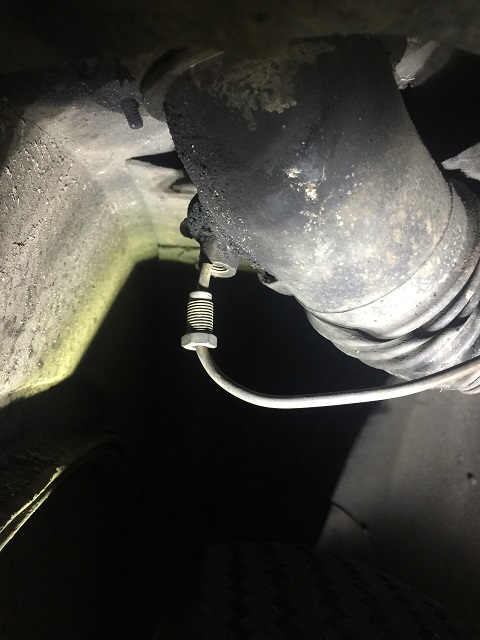 The drain disconnected. The fitting is underneath the breather between the tank and filler pipe. The breather pipe can be seen in the previous photo. Note that there is not a compression olive fitted. 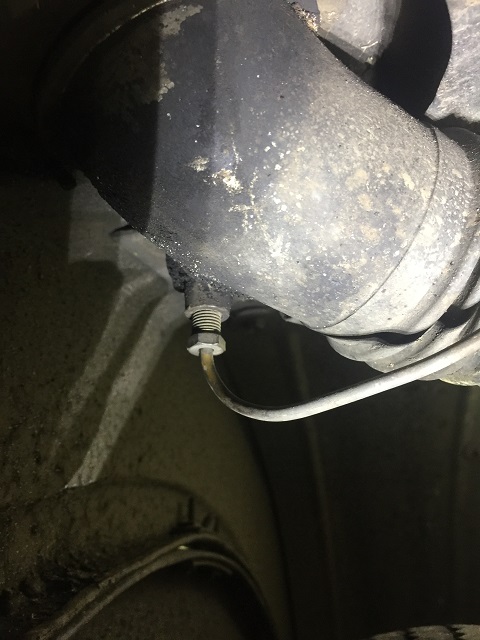 The drain line connected. I will pour some fuel from a jerry can into the system using a funnel next week and see what happens. | ||
David Gore Moderator Username: david_gore Post Number: 4121 Registered: 04-2003 |
John, Should the inlet end of the drain tube be flared rather than using an olive? I would expect the flare to provide more effective leak suppression sealing than the olive which, in my opinion, wouold be more prone to weeping/leakage. | ||
John Rowney Experienced User Username: johnrowney Post Number: 120 Registered: 02-2015 |
Thanks, David. Before considering a flared connection, I disconnected some of the downstream piping from a union as per the photo below. 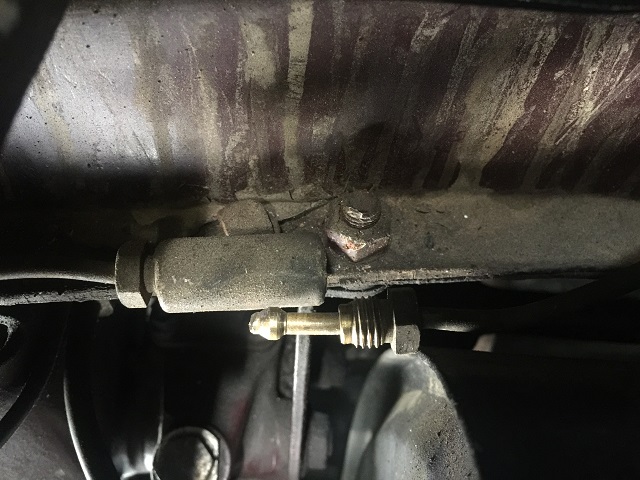 It can be seen that the union uses an olive rather than a flared connection. This would be the same as the Bijur tubing connections which use the same sized tubing (5/32"). So I will stick with the olive. I don't know how I would do a flare on 5/32" tubing and I don't think the internals of the fitting would be suitable for a flare. . | ||
John Rowney Experienced User Username: johnrowney Post Number: 123 Registered: 02-2015 |
After a month or so of neglecting WXA68, I finally got some 5/32" olives, and put one on the drain tubing. With the tank almost full, and after sealing everything with silicone on the outside of the piping/hose to the tank some time ago, I took her for a run today. Guess what? No smells. Since I am rather decrepit and having spent most of my working life in oil refineries, I reckon I don't have the sense of smell that my mates have. My trip today was rather pleasant although tedious with the ever-increasing traffic jams on the Gold Coast. I will aim to get my acutely sensitive mate to sniff things in a couple of weeks when we are around the area together. | ||
John Rowney Experienced User Username: johnrowney Post Number: 131 Registered: 02-2015 |
This morning, being such a beautiful day, my wife and I settled down under the brolly by the pool and I thought I would skim through "Reborn: An owner's Workshop Guide for the 25/30 Rolls-Royce" by Charles Vyse. I was looking for information on brake servo repairs. What jumped out at me from the book (which I had read several years ago) was a section entitled "Smell of petrol inside the car". Basically, Charles Vyse found that when cornering and smelling petrol, the carburettor bowl cover on his 25/30 had a slight warp, and that the G forces when cornering had forced the petrol out of the bowl. He had earlier painted his carburettor and he found that paint had blistered when the petrol escaped during cornering. Obviously, this could well be my problem. I am going on a surfing trip with a mate until the end of next week, but when I get back I will look at my carburettor in WXA68 and see if I have a similar problem. I reckon that there is a good chance that this could be the cause of my car's fuel smells when cornering. The fuel would have evaporated due to the engine temperature when I opened the bonnet after the smell was observed.( just like Charles Vyse's experience). I will update this post after I get back. |